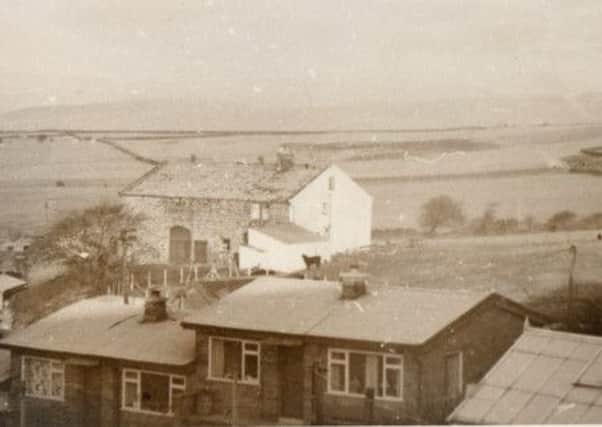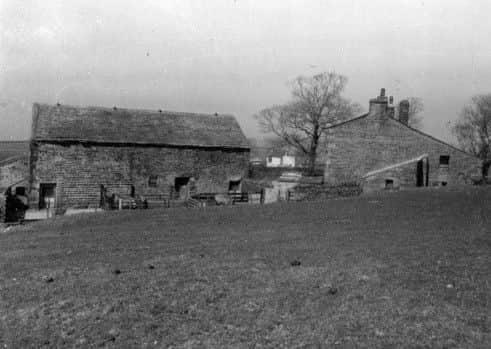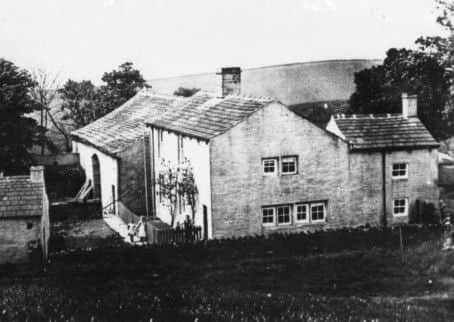Black Death changed face of countryside


We have seen that the Overseer of the Poor for Briercliffe found work and training for the children of poor people and they also resolved settlement matters relating to Briercliffe families who had moved elsewhere and families who had moved to Briercliffe but who were settled in other places.
I have been contacted by a number of people who would like to know more about the “concept of settlement” as it applies to the relief of the poor. We can trace this back to the Black Death of 1348, a plague which claimed over one million victims, not in one year, but over perhaps 20 years when there were four or five attacks.
Advertisement
Hide AdAdvertisement
Hide AdThe result was that the balance of feudal society was disturbed. Villages were abandoned largely because the labourers needed to tend its animals and sow its crops were no longer present. There was a shortage of labour which resulted in an increase in its price. Some landlords were prepared to acknowledge this but others were not. The latter often leased their property to small farmers thus preserving at least some of their income but others refused to release tied labourers from the bondage of the feudal system.


It was this that, in part, destabilised society. On the one hand some benefitted from the recognition that things had changed but others remained subject to the rules of the old system becoming increasingly unhappy with their lot. It was, in fact, much worse in that, in 1351, an Act of Parliament attempted to control wages indicating they would not be allowed to rise above the level they had been in 1346.
The Act was not adhered to by everyone and some landowners, even including the administrators of some royal estates, promised higher wages to labourers who would work for them. Workers had, therefore, an incentive to seek work elsewhere in the country but this resulted in harsh laws. People of the labouring classes found themselves moving around the country seeking work. This was one of the reasons that resulted in increased vagrancy which was made a crime by legislation passed in 1349, 1361 and 1383. In fact, the levels of crime in the 14th and 15th Centuries, much of it put down to vagrants, increased dramatically.
Five years later, in 1388, the Poor Law Act was passed. One of the provisions of the Act was that no servant or labourer was allowed to move out of the district in which he lived to serve or live elsewhere, or even go on pilgrimage, unless he had permission from crown officials. Anyone found in another locality, but without permission, was to be arrested, put in the local stocks and imprisoned to be returned to the place of his old service. Beggars and vagrants got the same treatment.
Advertisement
Hide AdAdvertisement
Hide AdSettlement usually meant the place of an individual’s birth but one could obtain the right of settlement in another place. The significance of this was that the place of settlement became responsible for the maintenance of the poor whether they lived locally or not.


The Briercliffe Poor Book does not say all that much about settlement or vagrancy. We have noted several examples of the former but these references come from other papers that have survived. There are, though, at least two references to vagrant warrants. In October 1754 the Overseer paid 3s.1d to John Smith to administer a vagrant warrant. There was another payment of 2s.6d to John Stanworth in June 1754 for helping with the issue of vagrant warrant. What was probably happening was that the Overseer had obtained a document from a local magistrate to have someone removed from Briercliffe who was not legally settled there.
Another function of the Overseer was to send to Briercliffe families not living in the Township, but still chargeable on the poor rate, monies should they require help. The best example of this is for the Lord family who lived in Rossendale. In June, 1755 there is this reference; “Paid, to two poor children of Lord’s in Rossendale, 19s.6d”. Previously “Mary Lord in Rossendale” had obtained 3s.6d.
Getting back to Briercliffe, it was expected those in receipt of relief should, if they were able to do so, work to offset the cost of their relief. In 1754, for instance, monies were received for spinning, this was a pretty regular income, at least one person was put to knitting and another did some carding.
Advertisement
Hide AdAdvertisement
Hide AdThe knitter and carder shared the same surname. “Old Mary Proctor” did £1’s worth of knitting in July, 1754 and “Old Proctor”, presumably her husband, did a little carding at the same time. It is thought this family gave their name to Proctor Cote in Extwistle. Even children did work as in October, 1754, when “children’s work” brought in 2s.7d.
Involvement in the textile industry, wool at this time, also brought some costs. There are several references to the purchase of wool and money was expended, in 1754, on “a pair of wool cards” and a spindle. Thread, coloured and “gray” was also bought and buttons are mentioned several times.
The purchase of cloth and clothing is also mentioned. In June, 1755 the sum of three pence was spent on cloth for children’s “capps”. In December the previous year, four and a half yards of cloth, costing six shillings, was bought for “William Nuttall, a new coat”. In April, 1754, 18 yards of “canvas cloth” at almost a shilling a yard was bought. Five yards of this was for Henry Nuttall and Thomas Rost “for the workhouse”.
In July, 1755, some twenty-seven and a half yards of “strong plain” cloth was bought by Henry Halstead, presumably the Overseer at the time. It was to be divided among a number of local families some of which include the Lord (of Rossendale?), Shackleton, Pilkington, Proctor, Simpson, Emmot (sic), Greenwood and Nuttall families. We even have details of how the cloth was to be used – Lawrence Proctor and “Old William Nuttall” were to get new “breeches” and Thomas Emmot, James Simpson, and Charles Greenwood intended to use their cloth for “waistecoats”. Mary Lord obtained three yards for a “smock petticoat”.
Advertisement
Hide AdAdvertisement
Hide AdIt is worthy of noting some of these families were in need assistance almost a century later when, in the 1840s, there was considerable unemployment among handloom weavers. In the lists of those receiving help at this time are members of the Simpson and Emmett families.
Footwear was another item bought for poor families. These include clogs for a “child of Shackleton” and the item “shoose mending” is frequently mentioned. Heating and lighting is another area of expenditure. In March, 1755 Grace Taylor obtained 2d worth of coal. None of the sums were very large but coal was granted to people in their own homes on a regular basis. Candles provided most of the light. Purchases were made for the workhouse and people in their own homes.
However, the greatest proportion of income from the poor rates was spent on food and the following items are mentioned between 1754 and 1755; salt, “treackle”, “meal” (presumably oatmeal), “wheat flour”, malt, butter, milk, veal, potatoes, onions, “barms”, mutton and beef. The purchase of meat was rare but some was bought at least once a month. Eight pounds of mutton, costing 1s.5d was bought in October, 1754. Then, early in November of the same year, 2s.9d was spent on beef.
Potatoes were bought regularly. They were often obtained from a shop-keeper, or perhaps a farmer, called Jackson. They were usually bought in bulk, actually in strikes or half strikes. Flour, often spelled “flower”, was also obtained from Jackson’s. Dairy produce, in large quantities, was obtained from Burwains, Yeoman’s, Windle House and Haggate House. Butter could be had at 4d per pound and milk was less than 1d per pint.
Advertisement
Hide AdAdvertisement
Hide AdThe reference to “barms” is worth expanding. These were probably barn-cakes and they were obtained at Holt Hill in 1754. If so, there must have been some sort of bakery at Holt Hill. Alternatively, the reference could be to yeast (which was known locally as “barm”) and, if that is the case, it is possible the workhouse had its own bread ovens.